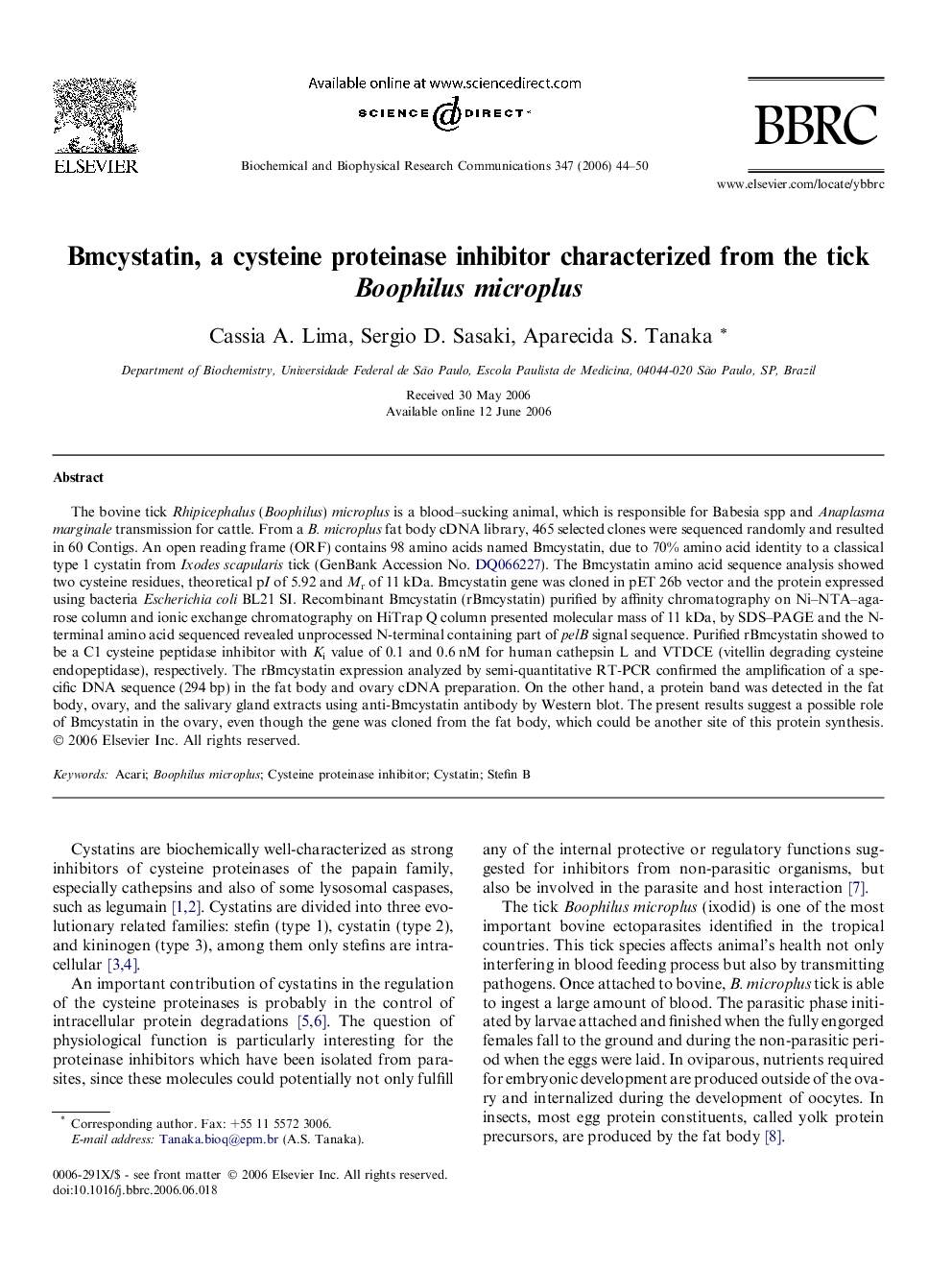| کد مقاله | کد نشریه | سال انتشار | مقاله انگلیسی | نسخه تمام متن |
|---|---|---|---|---|
| 1939162 | 1050756 | 2006 | 7 صفحه PDF | دانلود رایگان |
عنوان انگلیسی مقاله ISI
Bmcystatin, a cysteine proteinase inhibitor characterized from the tick Boophilus microplus
دانلود مقاله + سفارش ترجمه
دانلود مقاله ISI انگلیسی
رایگان برای ایرانیان
کلمات کلیدی
موضوعات مرتبط
علوم زیستی و بیوفناوری
بیوشیمی، ژنتیک و زیست شناسی مولکولی
زیست شیمی
پیش نمایش صفحه اول مقاله

چکیده انگلیسی
The bovine tick Rhipicephalus (Boophilus) microplus is a blood-sucking animal, which is responsible for Babesia spp and Anaplasma marginale transmission for cattle. From a B. microplus fat body cDNA library, 465 selected clones were sequenced randomly and resulted in 60 Contigs. An open reading frame (ORF) contains 98 amino acids named Bmcystatin, due to 70% amino acid identity to a classical type 1 cystatin from Ixodes scapularis tick (GenBank Accession No. DQ066227). The Bmcystatin amino acid sequence analysis showed two cysteine residues, theoretical pI of 5.92 and Mr of 11Â kDa. Bmcystatin gene was cloned in pET 26b vector and the protein expressed using bacteria Escherichia coli BL21 SI. Recombinant Bmcystatin (rBmcystatin) purified by affinity chromatography on Ni-NTA-agarose column and ionic exchange chromatography on HiTrap Q column presented molecular mass of 11Â kDa, by SDS-PAGE and the N-terminal amino acid sequenced revealed unprocessed N-terminal containing part of pelB signal sequence. Purified rBmcystatin showed to be a C1 cysteine peptidase inhibitor with Ki value of 0.1 and 0.6Â nM for human cathepsin L and VTDCE (vitellin degrading cysteine endopeptidase), respectively. The rBmcystatin expression analyzed by semi-quantitative RT-PCR confirmed the amplification of a specific DNA sequence (294Â bp) in the fat body and ovary cDNA preparation. On the other hand, a protein band was detected in the fat body, ovary, and the salivary gland extracts using anti-Bmcystatin antibody by Western blot. The present results suggest a possible role of Bmcystatin in the ovary, even though the gene was cloned from the fat body, which could be another site of this protein synthesis.
ناشر
Database: Elsevier - ScienceDirect (ساینس دایرکت)
Journal: Biochemical and Biophysical Research Communications - Volume 347, Issue 1, 18 August 2006, Pages 44-50
Journal: Biochemical and Biophysical Research Communications - Volume 347, Issue 1, 18 August 2006, Pages 44-50
نویسندگان
Cassia A. Lima, Sergio D. Sasaki, Aparecida S. Tanaka,